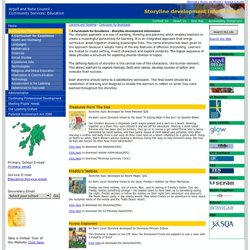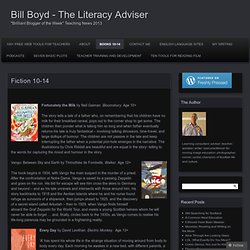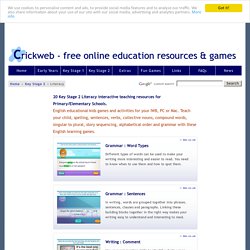

How to join cursive and continuous cursive bottom joining letters. Cursive and continuous cursive bottom joining letters join the next letter when the exit line of the letter kicks up from the writing line.

For the cursive letter handwriting style the exit curve needs to be extended to the next letter, creating a fluid writing style. With continuous cursive handwriting your child just needs to join the individual letters as, for this style , they already include the joining links. The examples given below for the cursive handwriting style show letter combinations often taught in key stage 1 and key stage 2 spellings. HOW TO MAKE THE BEST PANCAKES IN THE WORLD.
Amazing D'Nealian Handwriting Worksheet Maker. Reading. Argyll & Bute Council - Community Services: Education. Curriculum for Excellence A Curriculum for Excellence - Storyline development information The storyline approach is a way of working, thinking and planning which enables teachers to create a meaningful partnership for learning.

It is an integrated approach that brings curriculum areas together creating meaningful links. The name storyline has been given to the approach because it adopts many of the key features of effective storytelling. Learners are invited to create setting, invent characters and explore incidents. Fiction to support the curriculum. Writing frames. The Literacy Shed - The Literacy Shed Home. Www.andrelleducation.co.uk/_content/145/BWT.swf. Discover teaching ideas and lesson resources linked to children's books and literature. Scotland - Authors Live. 10 Resources for World Book Day. World Book Day takes place this week, on Thursday 1st March 2012.

Here are 10 great resources / sites that can help you if you’re planning to run lots of great book-themed activities in your classroom: 1) World Book Day – The official site is bursting with resources, videos and events that you can get involved in. You will also be able to watch authors and illustrators live online during World Book Day itself! 2) World Book Day App – The official app has exclusive new short stories from Malorie Blackman, Neil Gaiman, Charlie Higson, Anthony Horowitz and many other authors. There are also plans to update the app throughout the year with new samples, news, videos and extras. 3) Social Media – You can also follow what is happening before, during and after World Book Day with the official World Book Day Facebook and Twitter pages. 4) Teaching Library - Our Teaching Library site has lesson ideas, videos and resources linked to lots of popular children’s books.
30 Ideas for Teaching Writing. Summary: Few sources available today offer writing teachers such succinct, practice-based help—which is one reason why 30 Ideas for Teaching Writing was the winner of the Association of Education Publishers 2005 Distinguished Achievement Award for Instructional Materials.

The National Writing Project's 30 Ideas for Teaching Writing offers successful strategies contributed by experienced Writing Project teachers. Since NWP does not promote a single approach to teaching writing, readers will benefit from a variety of eclectic, classroom-tested techniques. These ideas originated as full-length articles in NWP publications (a link to the full article accompanies each idea below). Table of Contents: 30 Ideas for Teaching Writing 1. Debbie Rotkow, a co-director of the Coastal Georgia Writing Project, makes use of the real-life circumstances of her first grade students to help them compose writing that, in Frank Smith's words, is "natural and purposeful.
" Writing prompts: Archive. You Are Your Words - AHD. Robert Burns Resource Pack : Promethean Planet. Guided Reading and Reading Games with Roy the Zebra. A magical new movie birthday for kids. Myebook - get it out there! LendMeYourLiteracy » Create. Collaborate. Celebrate. Diary of a Wimpy Kid resources. Telescopic Text → Texts. The Scottish Storytelling Centre // Storytellers. Fiction 10-14 « Bill Boyd – The Literacy Adviser. Fortunately the Milk by Neil Gaiman.

Bloomsbury. Age 10+ The story tells a tale of a father who, on remembering that his children have no milk for their breakfast cereal, pops out to the corner shop to get some. The children then ponder what is taking him so long and when father eventually returns his tale is truly fantastical – involving talking dinosaurs, time-travel, and large dollops of humour. Schools. BoomWriter lets you easily incorporate and experience the benefits of technology as your students are engaged in the following (or similar) standards-based learning activities: Grade 3 CCSS.ELA-Literacy.W.3.3 - Write narratives to develop real or imagined experiences or events using effective technique, descriptive details, and clear event sequences.

Using BoomWriter’s feature allowing teachers to create their own story start, students collaboratively create imagined multi-paragraph personal narratives using a teacher generated prompt (e.g. Www.wordcentral.com/games/alpha-bot.html. Free online teleprompter. Inanimate Alice - Homepage. Artful storytelling. KS2 Literacy. Different types of words can be used to make your writing more interesting and easier to read.

You need to know when to use them and how to spot them. In writing, words are grouped together into phrases, sentences, clauses and paragraphs. Linking these building blocks together in the right way makes your writing easy to understand and interesting to read. Use your commenting skills to identify what's wrong with these pieces of writing. Grim Tales. “Ae fond Click!” – using ICT tools to support classroom activities on Scotland’s Bard Robert Burns. For many Scottish schools in January there is often an emphasis in the classroom on work on the life and literature of Scotland’s national bard, Robert Burns. The following resources provide ideas for how ICT tools can be used to provide different ways of helping to engage pupils with the study of the life and literature of Robert Burns or other Scottish literary figures.
So whether it’s around the time of 25th January (the birthday of Robert Burns celebrated by Scots the world over), or notable dates in the Scottish calendar such as St Andrew’s Day (30th November) or Tartan Day in North America (6th April), the following resources may provide some ideas for using ICT tools to help provide alternative ways in engaging pupils in the sudy of Scottish literature.